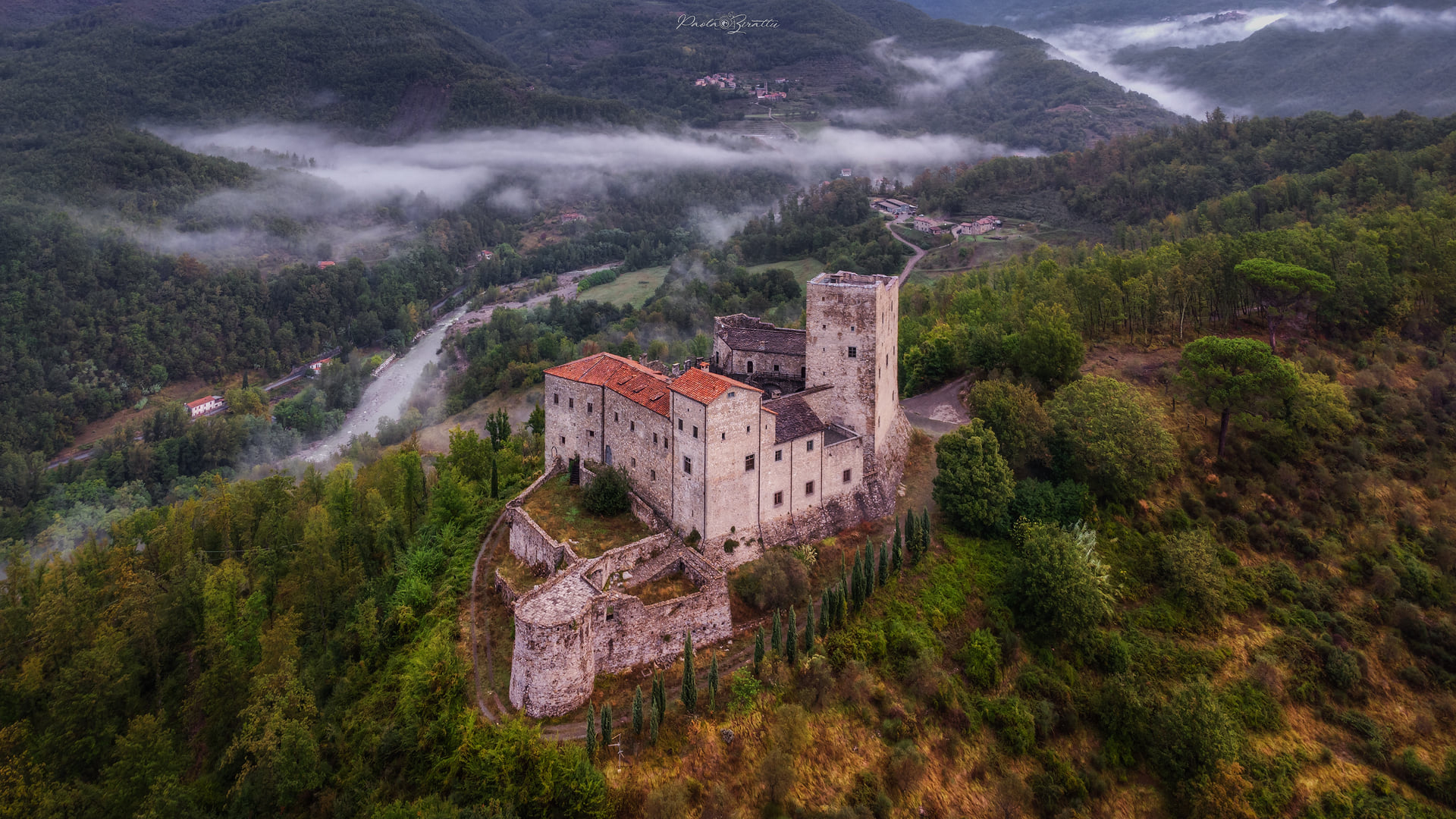

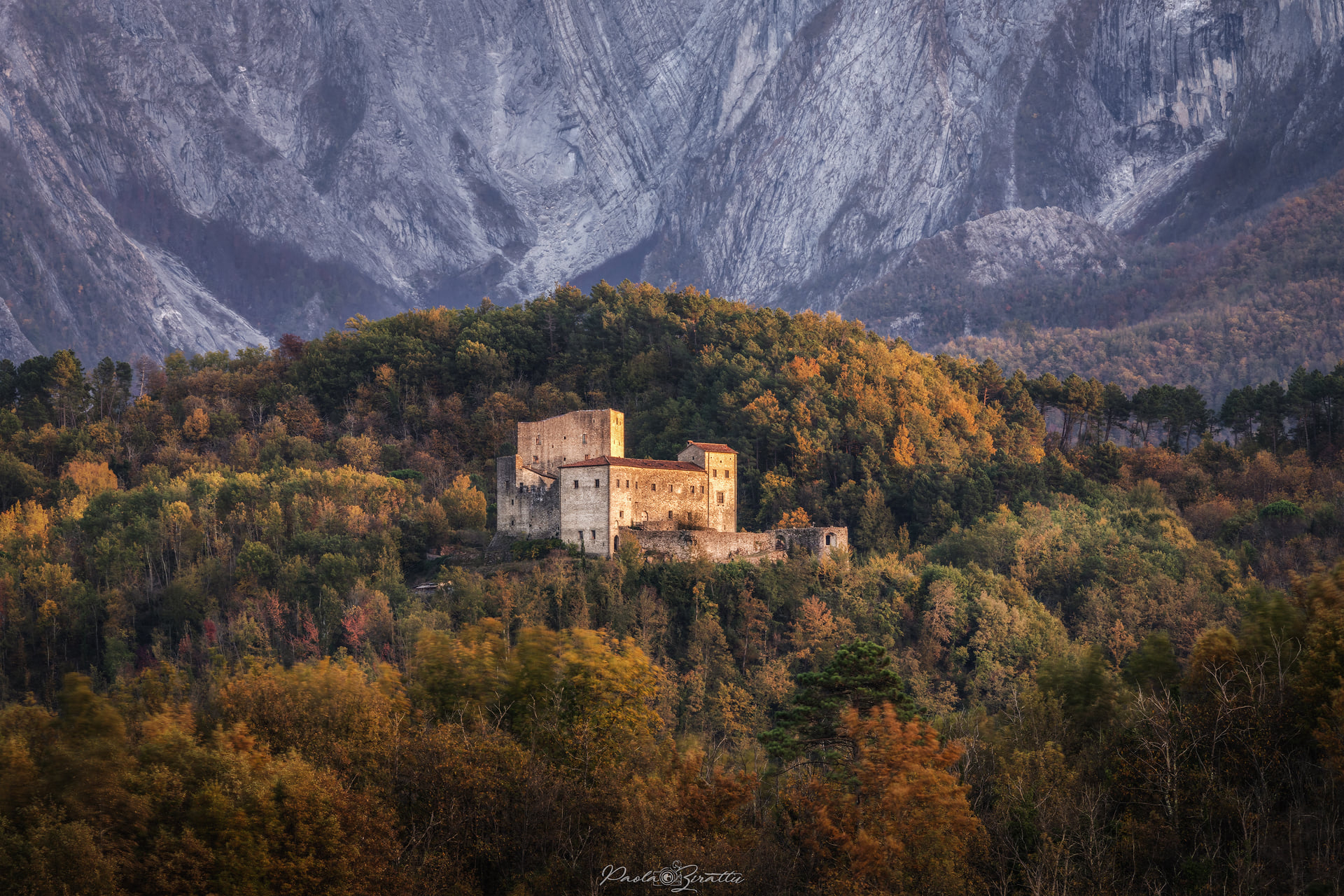
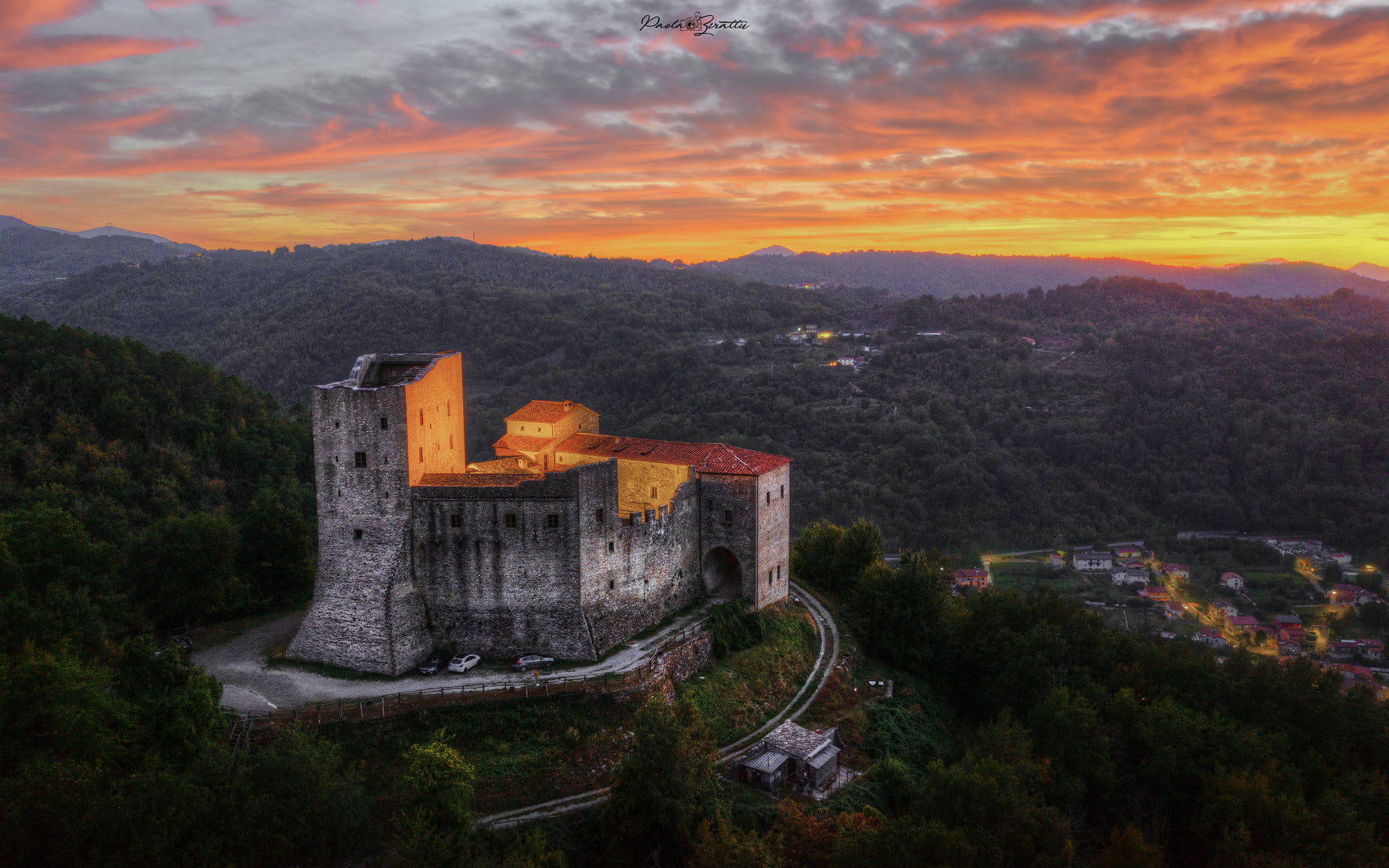
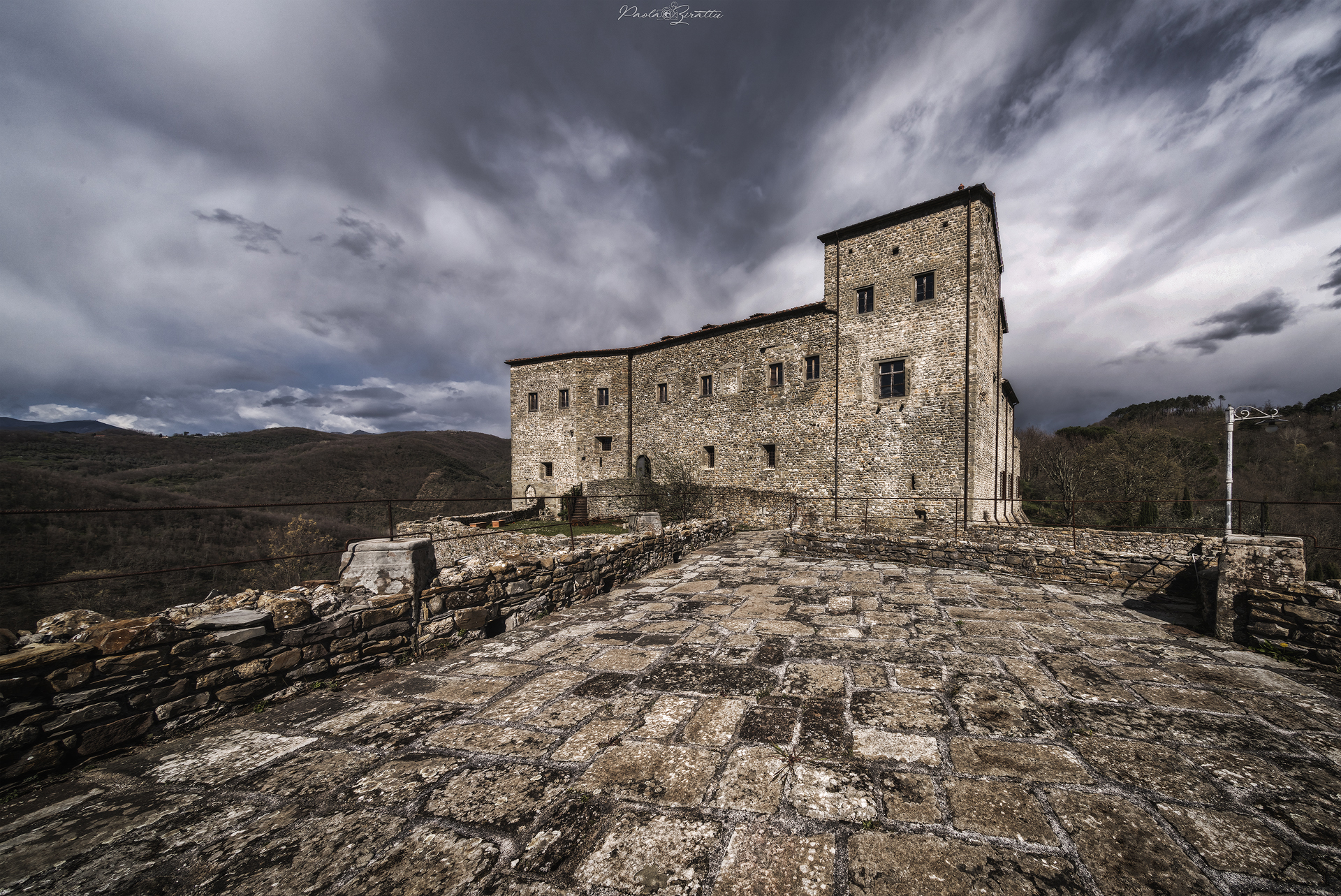

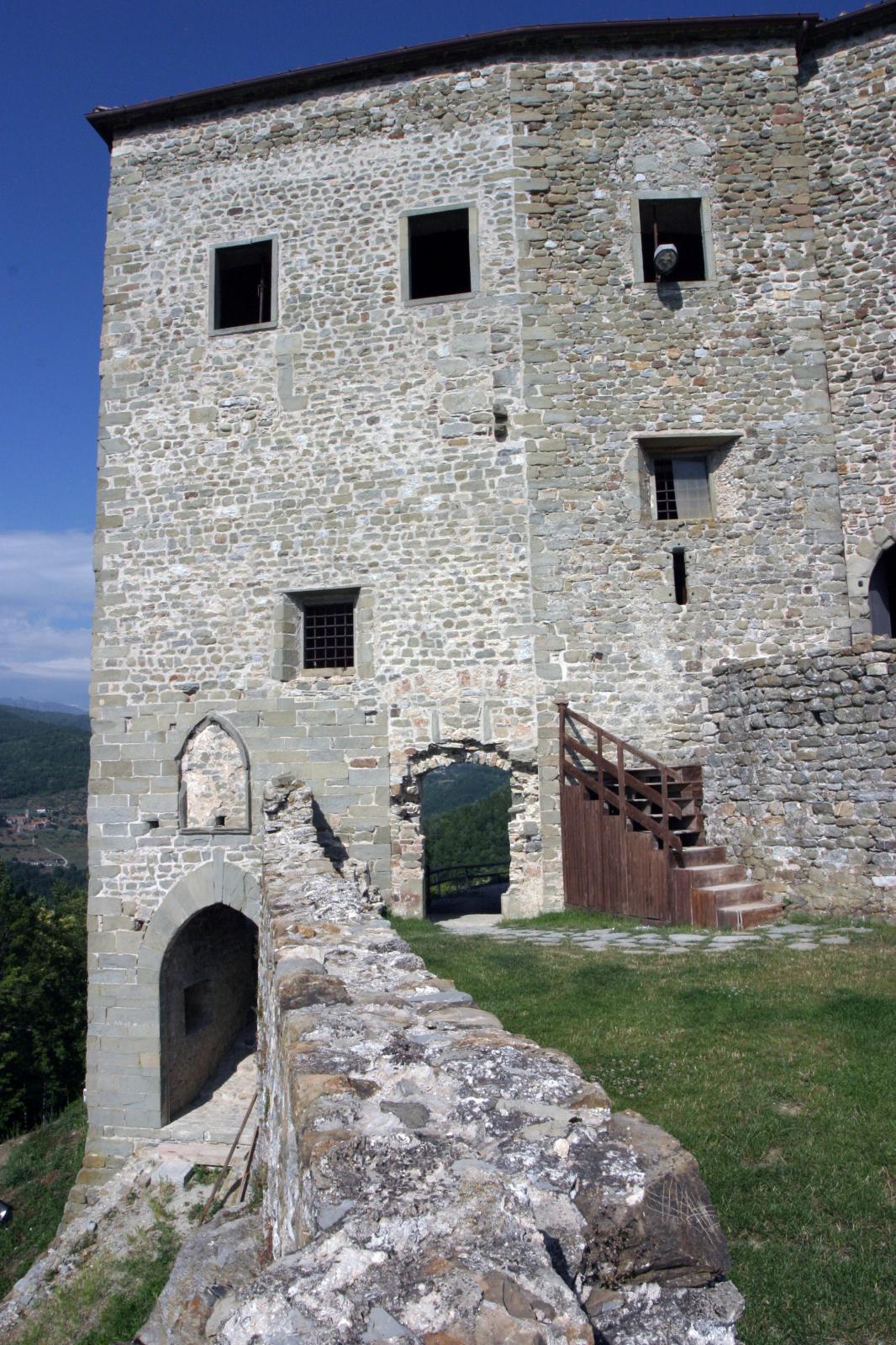

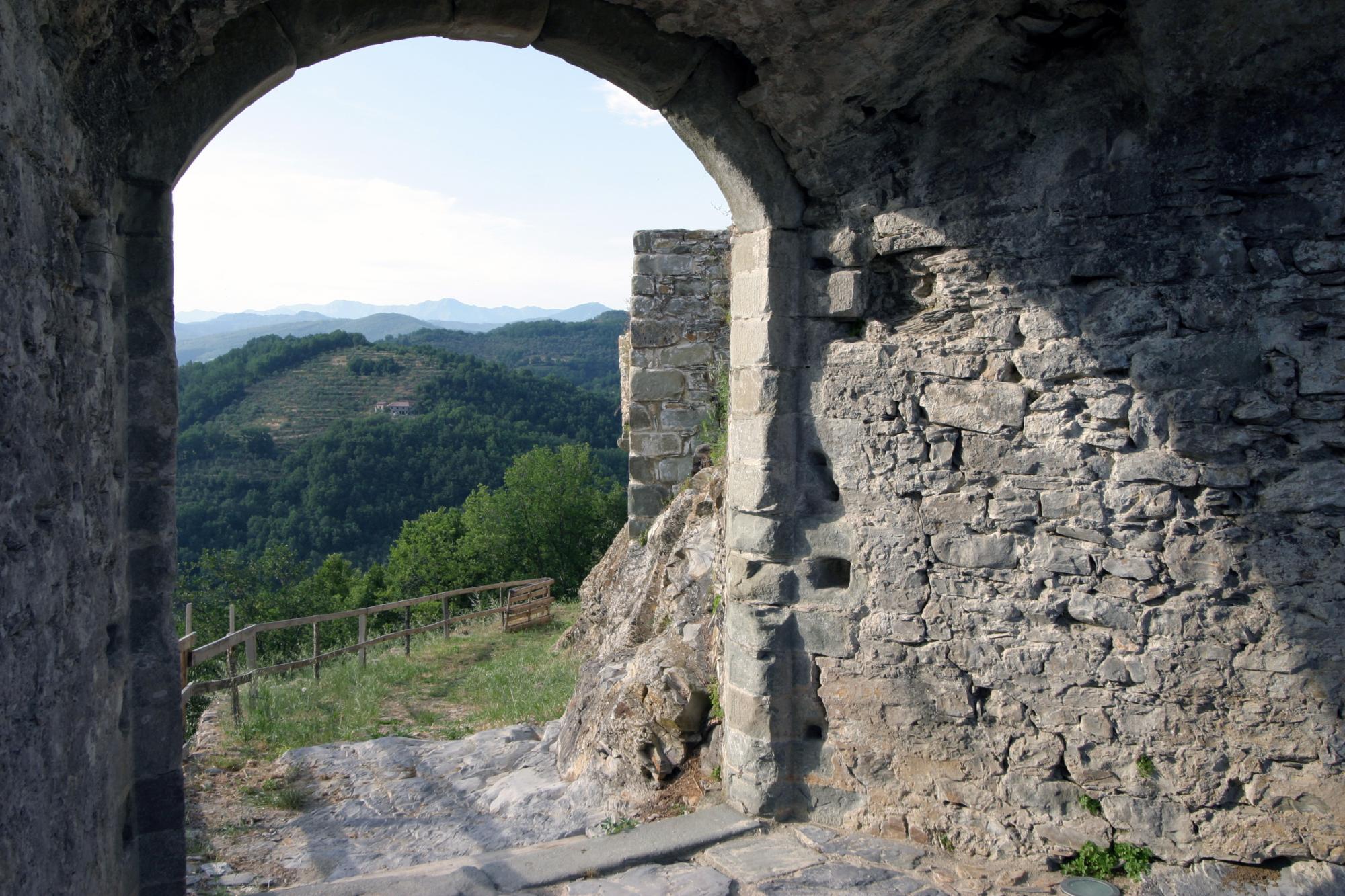

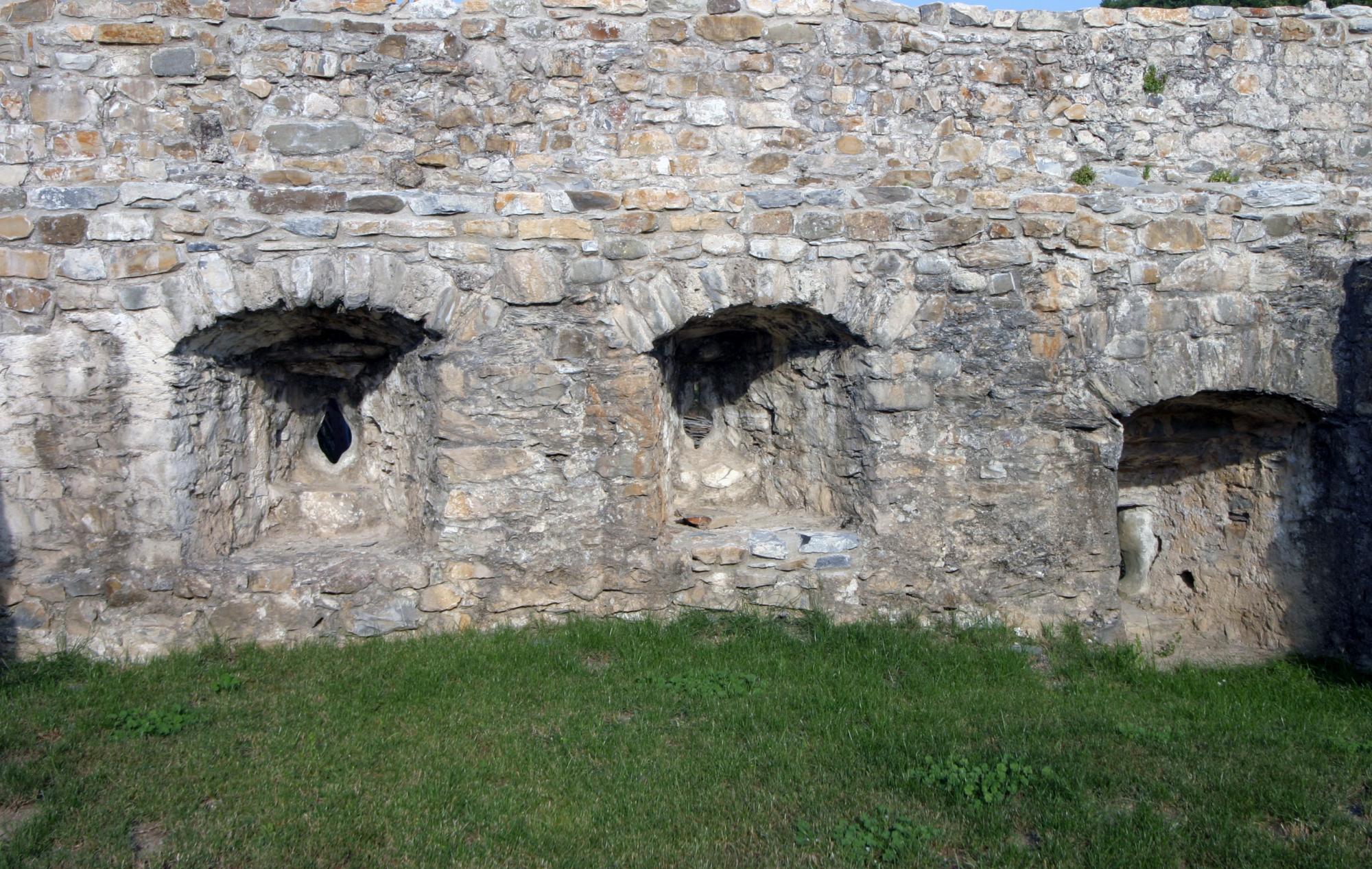
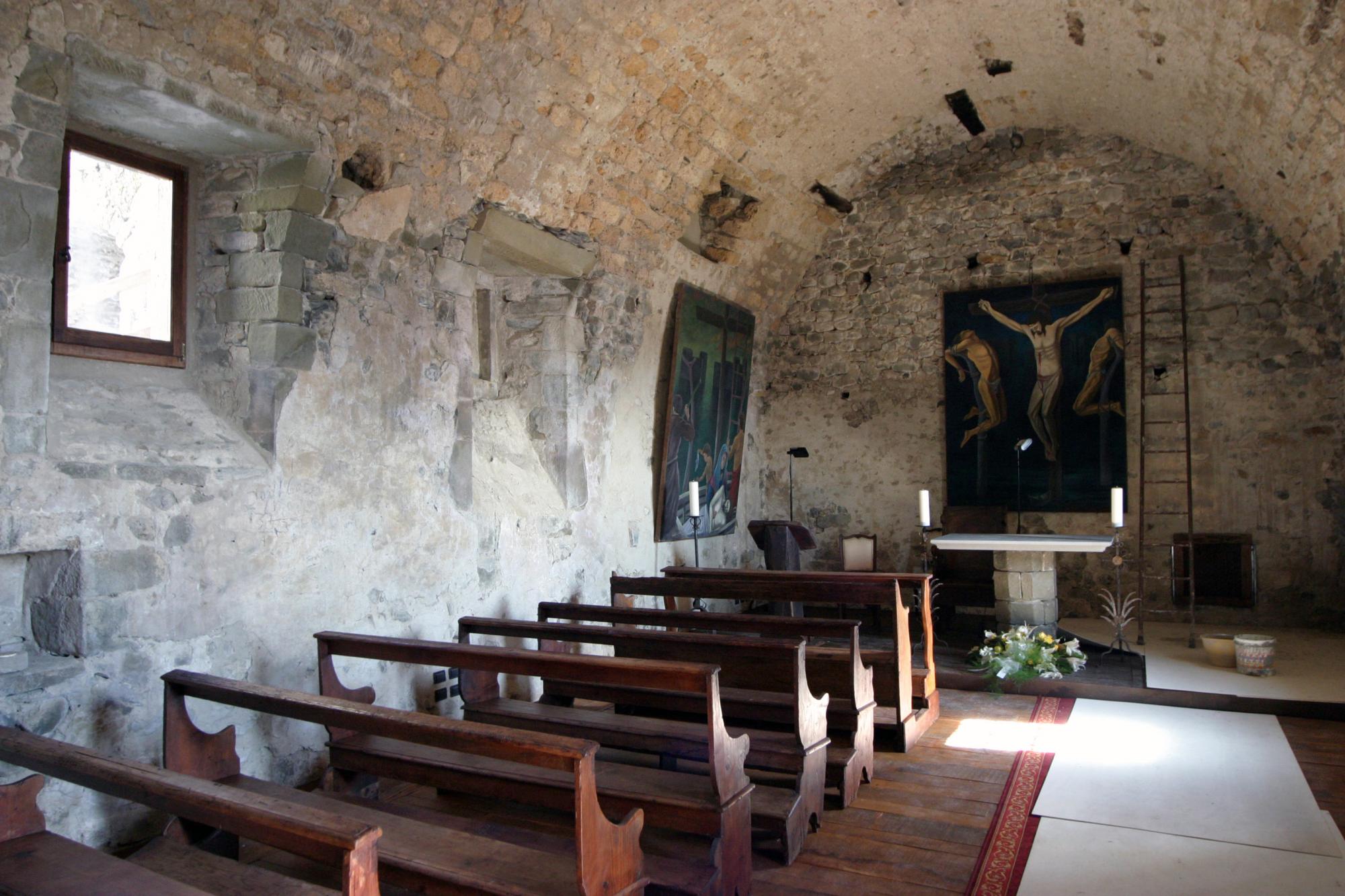
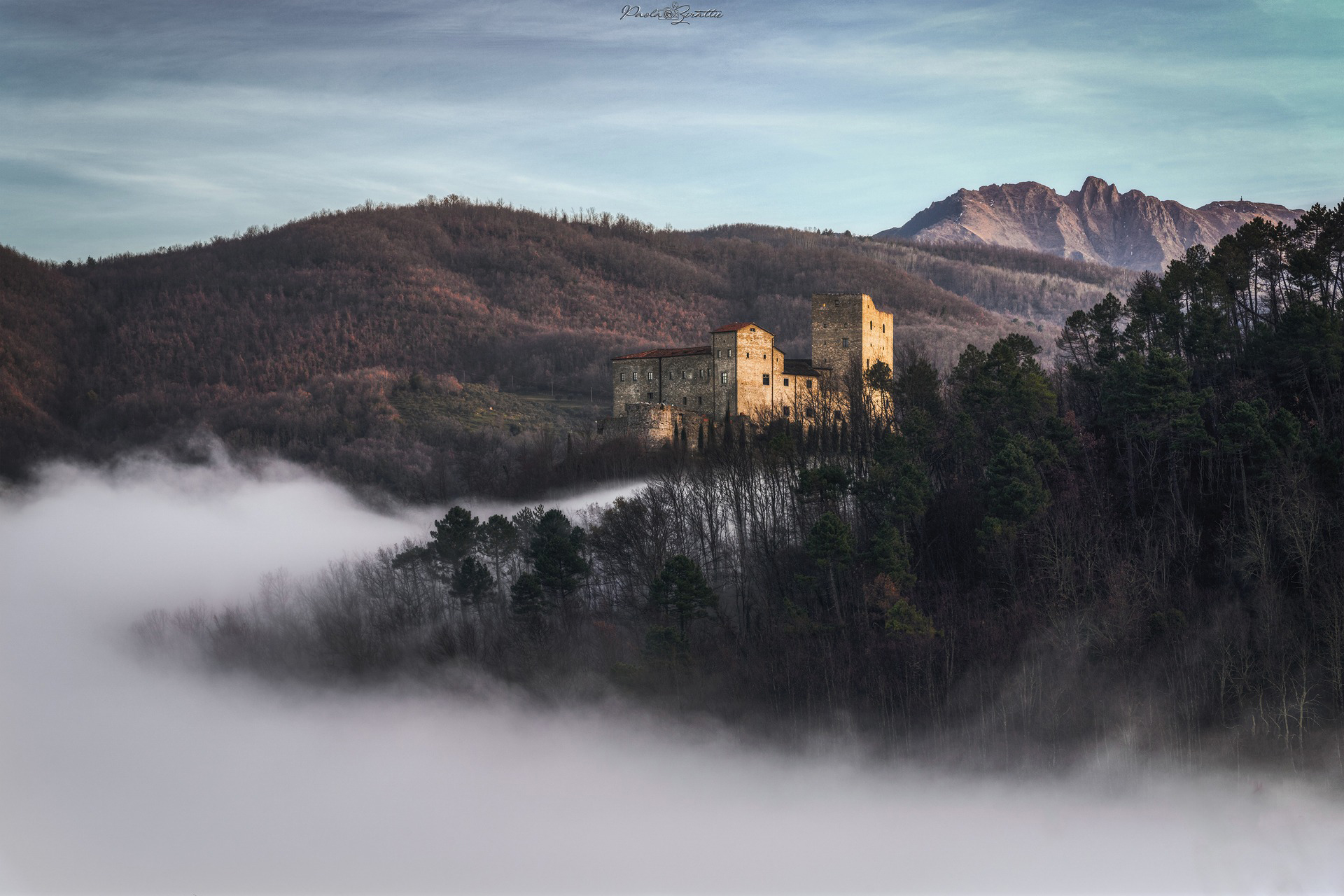













How to reach
Follow the motorway A12 Parma/La Spezia until the 'Aulla' exit; from the center of the town, continue in the direction of Fivizzano. Before arriving at Fivizzano, turn right, following the signs for Gassano. 5 km from Gassano, you will find the village of Gragnola, dominated by the Castello dell'Aquila (Eagle's Castle). Half way along the main road that crosses the village, turn left (the sign is not clearly visible until you are a few meters from it) and start climbing the mountain!
History
The Castello dell’Aquila [Eagle's Castle], a mighty fortified stronghold adapted for residence by the Marquises Malaspina, dominates Gragnola, a medieval village situated at the confluence of the streams Aulella and Lucido. The castle's origin is uncertain, it was probably erected to control the Medieval road network that had a critical crossing point in the valley below. Due to the strategic importance of the site - from this hill it is possible to have a bird's-eye view of almost the whole of Lunigiana - the castle has been occupied since the Liguri-Apuani and Roman era.
However, there are no documents that clarify the exact evolution of the castle's architecture. Today, the Castello dell'Aquila looks like a mighty stone building that incorporates a quadrilateral keep - with four storeys (now reconstructed in timber; the original stone barrel vault ceilings were lost) and its large dimensions is one of the largest of the Lunigiana. There are also three other angular towers, the north-west one crossed by a Gate, the main access to the inner ward. A second fine Gate, that opens at a higher level respecting the ground, defended by a primitive, squared barbican and two loopholes, is the only access to the inner ward. In the gate passage, on the right, is the castle's chapel, recently reconsecrated. The inner ward is dominated by the huge keep, on the north walls are still visible some battlements. The courtyard faces all the other residential and military buildings. The Great Hall, with its still intact barrel vault ceiling, is worthy of note.
The keep, in its embryonic version, dates back to the 13th century, but all the most important works were carried out during the 14th century, when the castle became the seat of a marquisate. The Malaspina, Spinetta Malaspina, and Leonardo 1st, above all, transformed the military stronghold into a prestigious residence.
More changes, like the building of a new outer walled curtain, date back to the 15th and 16th centuries, in order to adapt the castle defenses to the new gunpowder weapons. Access to the castle was totally changed: from the Outer Gate (that crosses on the north-west tower), an open air way starts, running along the external walls, controlled by a rounded turret; at the end of this path, a second gate opens in a newly built rounded barbican with gun holes facing the valley and with an annexed guard barrack. From here starts a new 'walled' way, a corridor, from which it was impossible to deviate, that leads to the Inner Gate. Also, the scarped reinforcements added to a great part of the outer walls and the keep, seem to date from this period; there are no traces or testimonies of preexisting machicolations or openings provided by building the parapet out on consoles, projecting beyond the face of the wall.
The decline of the Marquises Malaspina led to the abandonment of Castel dell’Aquila. At first, there was a slow, gradual decay, then the earthquake of 1920 left the castle a total ruin. Fortunately, before it was finally lost, a private individual bought the romantic ruins and the restoration started in 1996: it is carried on with real passion, care, competence and respect for the original form and building materials.
More info & notes
Drone Photos by Paola Zirattu - https://www.instagram.com/paola_zirattu/